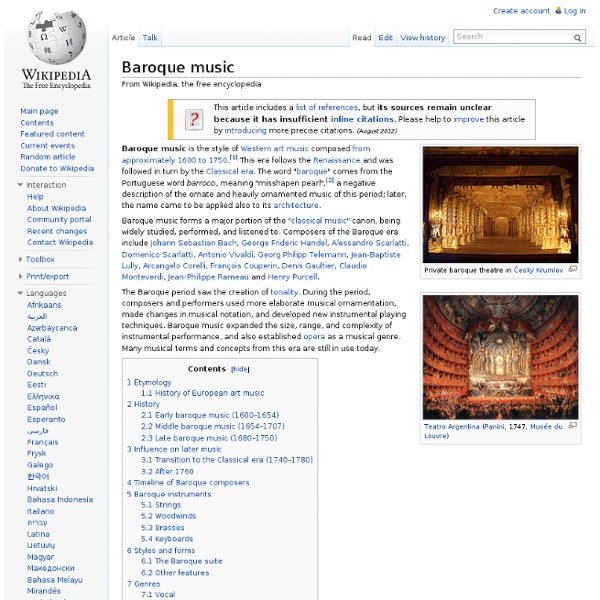Baroque music

Notes on the Baroque Suite
The principal areas I will cover in this brief discussion of the Baroque Suite are (a) its significance in the history of instrumental music and its origin as stylized dance music, (b) its overall structure and the structure and other characteristics of the individual movements, and (c) some historical and musical facts pertaining to the Suite in C Major for Unaccompanied Violoncello by J. S. Bach. I. Dance Music and the Baroque Suite In the broadest musical sense of the term, a “suite” is a multi-movement group of instrumental pieces, in forms smaller than the movements of a sonata. But it was during the late 17th and early 18th centuries, the so-called Baroque period in music, that “the suite became established in its most definitive form and universal acceptance…”[ii] This variant of the suite is comprised primarily of dance movements and is commonly known as the Baroque suite—or, sometimes, “the classical suite in the French Style.” II. a b c d a b III. V4/2 - (IV6/V or I6?)
The Baroque Era
As of July 1, 2013 ThinkQuest has been discontinued. We would like to thank everyone for being a part of the ThinkQuest global community: Students - For your limitless creativity and innovation, which inspires us all. Teachers - For your passion in guiding students on their quest. Partners - For your unwavering support and evangelism. Parents - For supporting the use of technology not only as an instrument of learning, but as a means of creating knowledge. We encourage everyone to continue to “Think, Create and Collaborate,” unleashing the power of technology to teach, share, and inspire. Best wishes, The Oracle Education Foundation
Baroque Opera « Categories « Opera History
In his early twenties future opera genius and famous baroque composer George Frideric Handel spent several years in Italy. While Handel was staying in Rome another great baroque composer Alessandro Scarlatti presented him to cardinal Vincenzo Grimani. In spite of being a religious figure of importance and a distinguished diplomat Grimani wrote libretti in his spare time, and acted as an unofficial theatrical agent for the Italian royal courts. He made Handel his protégé, and gave him his libretto for a future baroque opera Agrippina . Libretto tells the story of the ancient imperial Rome intrigues. Grimani’s family owned a theater in Venice, so it was an obvious choice for the cardinal to present the Handel’s opera there, as part of the 1709–10 Carnival season. Agrippina’s first performance took place on 26 December 1709. It was a smashing success. The opera was revised significantly before and possibly during its run.
Related:
Related:



